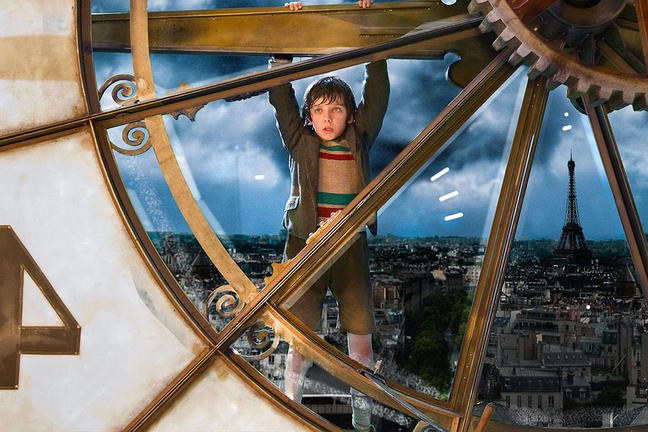Table of Contents
James Cameron’s Revolutionary Vision for 3D Cinema
Having enjoyed the immense success of Titanic in ‘1997, James Cameron went on to try and shift the borders of the cinematic realm to the truly ambitious passion project, Avatar. Realizing that the available machinery was not capable of capturing his idea of the bioluminous alien environment of Pandora, Cameron spent more than 14 years creating new tools required for his film making work alongside his cinematographer Vince Pace. One of their game-changing devices, the Fusion Camera System, was a true groundbreaker as it rendered two high-quality cameras into one rig that was able to bring the 3D effect visible to the human eye. Through this arduous journey of technological innovation, James Cameron showed his special course, refusing to accept a compromise with his creative vision.
When Avatar was finally released in 2009, people across the world, 12 years after the world-shattering success of Titanic, hurried to the cinemas to see Cameron’s new technical wonders. The film’s reception was polarized on its narrative, a mixture of the elements of Dances With Wolves and FernGully, however, visuals and the 3D experience were highly liked by the audience worldwide. The very thoughtfully designed universe of Pandora, which was photographed in 3D rather than converted, was a cinematic masterpiece that had never been seen before and is still the same.
![]()
This kind of a film has a worldwide influence and establishes with such a high-quality in excellence that remains unchanged. The massive widening of the film connected Avatar beyond Titanic in the process of being the top-grossing movie of all time which supported the statement that the introduction of technology can be the green signal for box office success alongside visionary storytelling. The film’s success entrenched Cameron’s standing as a pioneer of the synergy between the frontier technologies and mass entertainment.
The Film Industry’s Failed 3D Gold Rush
Avatar’s incredible success kickstarted a wild wave of 3D in Hollywood, with the studios jumping to make money on the trend. However, the majority didn’t get to grasp Cameron’s delicate and rational method of using the technology. Instead of recording in 3D directly, as it was in the case of Avatar, studios resorted to converting post that was always done in a hurry and that led to the low visual quality of the films. With a couple of films like How to Train Your Dragon that showed the potential of the format if properly realized, several disasters in films such as Clash of the Titans and The Last Airbender that resulted in notorious conversions marked the degradation of the audience’s love for 3D. This was because the movies became mostly just a tool to increase ticket prices but not to improve the art of storytelling.
In the end, this was what undermined the early happy and enthusiastic audience slowly but surely until it was no more. The steep drop in 3D’s favor throughout the years pointed out the significance of Cameron’s style of making films and the financial focus of the movie industry. While Avatar uniquely utilized 3D to create a more in-depth experience in the magical world of Pandora, most copycats just used it as a mere effect. Cameron’s intricate work of 3D helped to obtain real depth that did not destroy the illusion of the film’s world, contrary to the post-conversion procedures, which gave very weak and very dark pictures, besides a marginal effect, indeed. This dichotomy revealed how most studios fundamentally misunderstood what made Avatar’s 3D so effective – not the technology itself, but James Cameron thoughtful application of it to serve the narrative and worldbuilding.
James Cameron Surprising Endorsement of a 3D Masterpiece
In a remarkable show of professional admiration, James Cameron himself praised another filmmaker’s exceptional use of 3D technology, calling it the best implementation he’d ever seen. This unexpected endorsement demonstrated Cameron’s genuine commitment to advancing 3D cinema beyond just his own projects. It also served as validation that when handled with similar care and vision to Avatar, the technology could still produce breathtaking results. The film in question (which Cameron declined to name publicly) stood as proof that quality 3D filmmaking could exist outside of Cameron’s work, though few filmmakers proved willing or able to invest the necessary time and resources to achieve similar results.
While he keeps adding to the Avatar franchise with more sequels, Cameron’s impact on movie technology remains second to none. Despite the fact that the initial 3D wave had gone by the wayside due to the industry-wide overuse of the format and poor management of the technology, James Cameron has provided a bright example of what the format is really capable of when properly used.
Allowing the director to step away from putting all his energy into technological advances serves as an illustration that he is an innovator, a person who must lead the industry and not in the direction of getting a quick profit. Through the introduction of new technology for virtual production and cameras with high frame rates for the Avatar sequels, James Cameron keeps writing the new definition of cinema, which consequently guarantees his eternal influence in the industry. It is the attitude of the other creators towards this new technique that will finally decide whether such kind of a film industry future dream will ever be realized.
Scorsese’s Unexpected Journey into 3D Filmmaking with Hugo
Martin Scorsese’s decision to direct films in 3D not only thrilled audiences but also stunned film critics with 2011’s Hugo, in sharp contrast to his signature style. With Brian Selznick’s The Invention of Hugo Cabret as a reference, Scorsese gave the audience a family-friendly film, the only one in his dirty filmography. Although it had poor box office results – it only managed to make $185.8 million with a $150-170 million budget – the movie found a lot of success critically, getting 11 Oscar nominations and winning five of them, as well as Best Cinematography. Where critical and financial ground colossally diverged, the film eked out as a respectably consequential case of winning purely artists-in-determining producers over to the idea of 3D as a means of a creative breakthrough rather than a commercial business one.
James Cameron, the undisputed pioneer of modern 3D cinema, expressed his astonishment following a special screening at the Directors Guild of America theater. From a rare public dialogue with Scorsese, Cameron went on to praise the movie’s effortless incorporation of 3D technology, pointing out that it was more informative than detracting from the narrative. His great support represented even more as the creator of Avatar, the film that reminded people their love for 3D cinema.
James Cameron went into detail and expressed his amazement at how Scorsese had combined 3D with the visual language of the film in all areas – from color palettes to camera movement and composition. By describing the technical aspects of Hugo as if it was “a 16-cylinder Bugatti firing perfectly on every cylinder,” James Cameron even elaborated on the view that Scorsese had mastered the type of 3D technology that was, up to that time, not even done by Avatar.
The Artistic Integration of 3D in Hugo’s Cinematic Language
What made Hugo special in Cameron’s eye was that Scorsese merged 3D totally into the film’s basic visual storytelling. As opposed to a large number of 3D films that used the technology only for the sake of the display, Hugo established the third dimension as a natural continuation of the film’s main theme of vision, perception, and the history of cinema. Scorsese’s careful use of 3D as one more means resulted in a natural effect, which attracted the audience to the magical Parisian world of Hugo. The film’s highly detailed and carefully chosen shots provided a change of different dimensions through stereoscopy, which resulted in a kind of experience that assisted the emotional thematic development.
This particular kind of artwork suggested, contrary to the existing notions, that 3D was useful not just for action movies or animated ones but also for in-depth, personal dramas if it was managed resourcefully and purposefully. Although Hugo did not immediately produce an echo effect on other directors in the drama film industry, it substantially changed people’s perception of 3D technology. Cameron’s support of the 3D medium caused its wider embrace not only as an entertainment but as a high art form, and by that, they embraced the topic of creative potential also.

The film factually proved that the use of 3D was not limited to sci-fi epics, but it could be utilized in a very fine manner in the telling of delicate stories or a perfectly represented period drama. Scorsese never made another 3D film after Hugo, but this movie is still highly respected in the history of cinema, as it shows that a great director can use a new technology to make art. This story proceeds to stimulate discussions on how new technologies could assist instead of dominating traditional storytelling.
Scorsese’s Visionary Approach to 3D Storytelling
Martin Scorsese’s Hugo breaks the tradition of 3D filmmaking by utilizing the technology as not just a spectacular novelty but rather an essential element of storytelling in an innovative way. Contrary to other 3D blockbusters mainly using this technology to film action movies, Scorsese was focused on the stereoscopic images that should convey the emotions and make the film’s magical realism even more convincing. Every frame by the director was a result of hard work and careful decisions to support the narrative through depth perception, camera movement, and color composition. The visual realization of the movie extended into the vivid world of Hugo’s Paris which really made the 3D elements feel every bit as necessary as the story itself, capturing the audience in a different world like the incredible Paris of Hugo.
Scorsese’s attempt has made the point that 3D can be as effective in transmitting more sensitive character-driven narratives, and this can be done as successfully as in a big-budget when handled with proper care and intention. Scorsese deliberately chose 3D for Hugo to create a profound connection with the birth of cinema itself. The film’s exploration of Georges Méliès’ pioneering work mirrors Scorsese’s own innovative use of modern technology, forming a perfect thematic circle.
As Scorsese noted, the Lumière brothers’ early experiments included stereoscopic films, and Méliès himself explored dimensional illusions. This historical context justifies the 3D format as a natural evolution rather than a contemporary gimmick. The technology becomes a bridge between cinema’s magical beginnings and its future possibilities, making Hugo both a celebration of film history and a demonstration of its ongoing technological advancement. Scorsese’s meta-commentary reveals how 3D represents the fulfillment of early filmmakers’ dreams about immersive storytelling.
Cameron’s Unprecedented Endorsement of Dramatic 3D
James Cameron’s enthusiastic endorsement of Hugo has a lot of weight, considering him the primary 3D cinema pioneer. More to the point is his admiration for how Scorsese interweaved 3D seamlessly into every artistic element of the film, from the performances to the production design. Not only did the director of Avatar realize this, but he also led the formation of the idea that a technique is developed in the film, not just for action sequences. Besides, Cameron’s explanation that Hugo is “the best 3D photography I’ve seen” is proof that Scorsese did even better than Cameron himself in placing technology in the service of storytelling. This almost mutual adoration of two legendary filmmakers significantly highlights the unique accomplishment of Hugo in elevating 3D to a real artistic expression.
Hugo, although having been nominated for five Academy Awards, is still a surprising standout in a body of work widely celebrated in Scorsese. Surrounded by harsh dramas such as Shutter Island and The Wolf of Wall Street, this family-friendly fantasy shows the side of the director’s versatility that nobody anticipated. The film’s mix of warmth and childlike innocence is not common to Scorsese’s explorations of violence and moral ambiguity, but it affirms his signature detailed and careful work. This artistic deviation underscores the filmmaker’s capacity to tap into the unexpected areas of his genre-categorical heritage of the film industry. Despite the general neglect in the search for his unparalleled pieces, Hugo is a significant fragment in Scorsese’s diverse shoulder as well as his fervent journey through the potent force of cinema.
The Critical Reception vs. Commercial Performance Paradox
The disappointing performance of “Hugo” at the box office is strikingly different from the overwhelming critical praise and the awards the film received. The film’s poor financial performance can be attributed to marketing challenges – people did not expect a family film in 3D from Scorsese, while families who noticed his reputation probably did not go to the movie. However, the movie’s 11 Oscar nominations and 5 wins (including Best Cinematography) serve as evidence of its artistic success. This disconnection shows that pioneering work often does not get the audiences’ attention right away, despite the subsequent acknowledgment. Hugo’s impact has been steadily rising from the moment it was released, and many have since been re-evaluating it as one of Scorsese’s most personal and most technically proficient films, which shows that commercial success is not always an indicator of true cinematic art.
The ideal way to appreciate Hugo remains the 3D theatrical presentation Scorsese carefully designed, though this presents challenges for modern viewers. While 3D home viewing options exist via Blu-ray, the format’s declining popularity means few can experience the film as intended. This accessibility issue underscores how technological advancements sometimes leave great works behind. For cinephiles, seeking out rare 3D theatrical screenings becomes essential to fully appreciate Scorsese’s vision. The film’s technical demands highlight an ongoing preservation challenge – how to maintain access to works designed for specific presentation formats that fall out of mainstream use. Hugo stands as a compelling argument for maintaining 3D projection capabilities in specialty theaters.
Hugo’s Lasting Influence on Cinematic Technology
Even though Hugo was not the initial film to drive 3D into the mainstream, this cinematic work was regarded as a cornerstone of artistic technology. The movie demonstrated that 3D technology can not only depict emotional and inner depth but also create a far more intimate storytelling scene. Scorsese’s use of 3D to create an emotional rather than a visual spectacle made the format go in a new direction. In the times of rapid development of virtual and augmented reality technologies, the ideas from Hugo referring to the introduction of subtle but powerful immersion remain highly relevant. The film endures as both a love letter to cinema’s past and a visionary model for its future, demonstrating how new technologies can honor storytelling traditions while pushing them forward in exciting ways.



